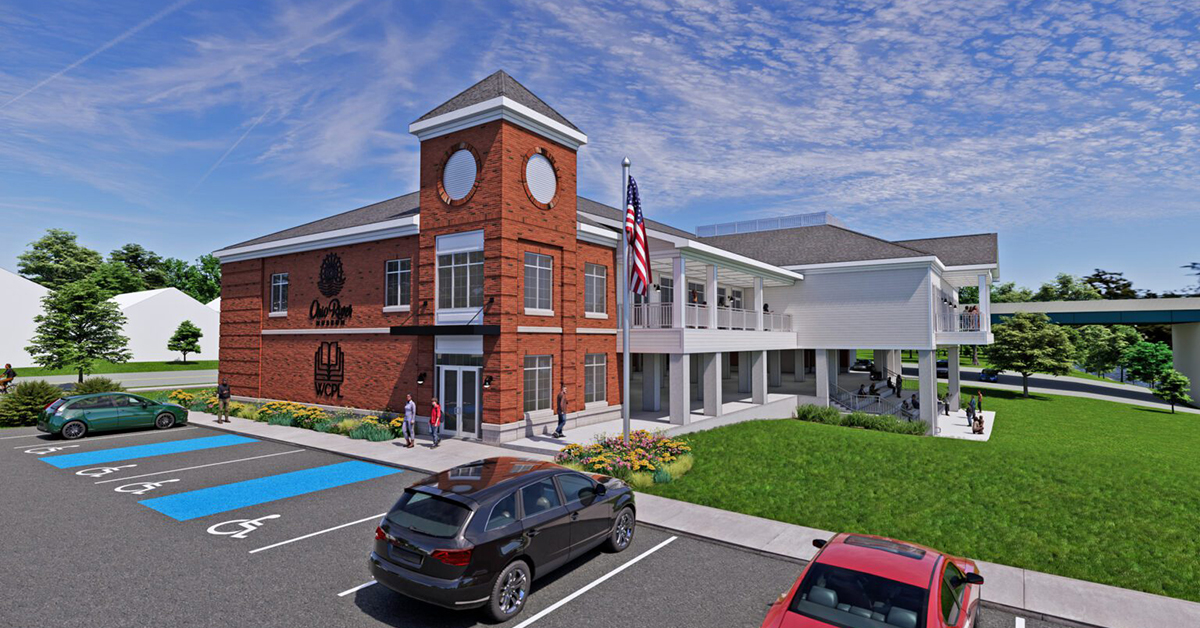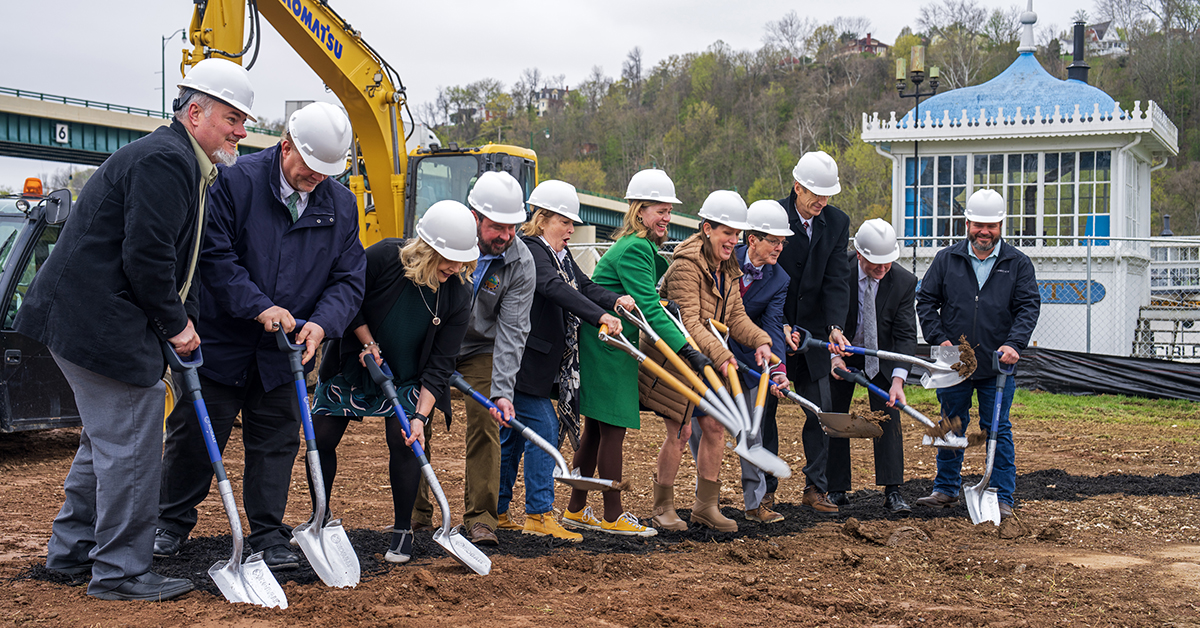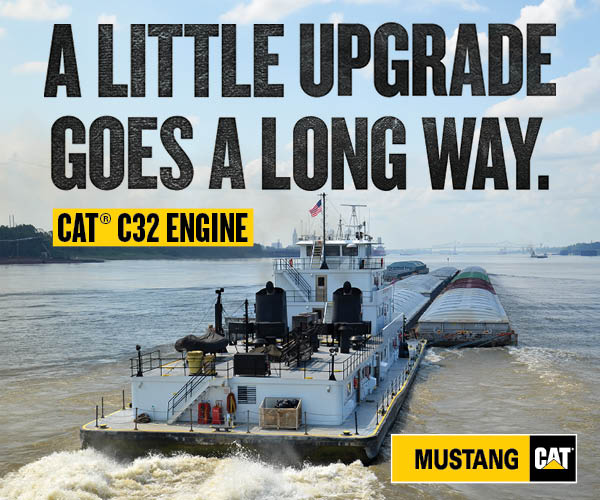In a ceremony held along the banks of the Muskingum River in Marietta, Ohio, on April 11, ground was broken for the new Ohio River Museum to be built there. Two of the three buildings that comprised the present museum facility, which opened in 1973, have been demolished to make way for the new project.
The first river museum at Marietta opened in the basement of the Campus Martius Museum in 1941 as a joint effort between the Ohio State Archaeological and Historical Society and the Sons & Daughters of Pioneer Rivermen. Over the years, exhibits outgrew the space, and in December 1968 discussions began regarding a new and separate facility for the river museum. The Ohio State Legislature later earmarked money for a new facility “along the banks of the Ohio River” at Marietta. Several sites in the area were considered.
In January 1970, the museum site selection committee recommended that the proposed museum be located along the east bank of the Muskingum River between Washington Street and Sacra Via. The location would provide a park-like setting near the confluence of the Ohio and Muskingum rivers, and the retired steam towboat W.P. Snyder Jr., itself serving as a museum since 1955, would be moored virtually on site for easy access. The new facility was designed by the Marietta architecture firm Eesley, Lee & Vargo. Construction began in mid-1971, and opening ceremonies were held on October 14, 1973.
The facility consisted of three separate buildings, dividing the exhibits into groups displaying the pre-steamboat, steamboat and modern eras. The structures were elevated above the 45-foot flood stage and were interconnected by covered walkways.
After 50 years, it was decided that a new museum would better serve the purposes of the growing number of exhibits and the needs of the community. A multi-phase, $14.3 million project was planned, with a 29,000-square-foot facility that would house the Ohio River Museum, along with the local history and genealogical collections of the Washington County Public Library. Construction is expected to be completed in 2027.

The groundbreaking was held in the shadow of the venerable W.P. Snyder Jr., built in 1918, and the pilothouse of the packet Tell City, which dates to 1889. Speakers touted the partnerships that made the new museum possible, which included organizations like the Sons & Daughters of Pioneer Rivermen (S&D), Washington County Public Library, Washington County Commissioners, U.S. Department of Agriculture and both state and local officials. Vic Canfield, S&D vice president, participated in the groundbreaking, and Capt. Charles R. “C.R.” Neale III, a member of the S&D board of governors, was also in attendance.
Neale has recently totaled an approximate list of contributions to the Ohio River Museum by S&D, both by the organization as well as its J. Mack Gamble Fund, including some known contributions by towing industry companies. Donations totaled some $1.5 million, with the S&D museum collection accounting for some $750,000 of that number.
Featured image caption: Officials break ground April 11 on the new Ohio River Museum, with the steamer Tell City’s pilothouse in the background. (Photo by Capt. C.R. Neale III)




